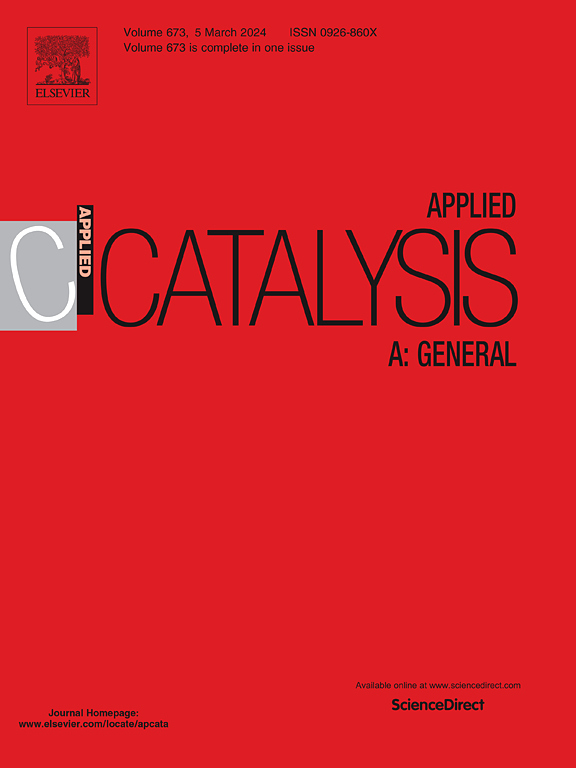Enhanced catalytic performance in oxidative dehydrogenation of ethane via trace nickel oxide and boron nitride synergy
IF 4.7
2区 化学
Q2 CHEMISTRY, PHYSICAL
引用次数: 0
Abstract
The oxidative dehydrogenation of ethane (ODHE) is an attractive route for ethylene production. While hexagonal boron nitride (h-BN) demonstrates excellent ethylene selectivity as a catalyst for ODHE, its limited ability to activate ethane necessitates high reaction temperatures. In this study, we developed a series of h-BN modified with trace amounts of NiO nanoparticles (xNiO/h-BN) to enhance ODHE performance. At a NiO loading of 1.0 wt%, the composite catalyst achieved optimal performance, with 30.4% ethane conversion and 86.6% ethylene selectivity at 590°C, representing a 1.5-fold improvement in activity over pristine h-BN. Experimental results reveal that trace NiO nanoparticles do not promote the decomposition of h-BN to generate excessive BOx species. Instead, these exposed nanoparticles play a synergistic role in activating ethane. The generated active ethyl radicals are rapidly dehydrogenated by adjacent BOx species, thereby enhancing catalytic activity while maintaining selectivity for the target product. This work advances the understanding of co-catalytic interactions between metal oxide and h-BN and highlights the negative effects of BOx overlayers on NiO surfaces, offering valuable insights for designing h-BN-based catalysts in ODHE.
通过微量氧化镍和氮化硼协同作用增强乙烷氧化脱氢的催化性能
乙烷氧化脱氢(ODHE)是一种有吸引力的乙烯生产途径。虽然六方氮化硼(h-BN)作为ODHE催化剂表现出优异的乙烯选择性,但其激活乙烷的能力有限,需要较高的反应温度。在这项研究中,我们开发了一系列用微量NiO纳米颗粒修饰的h-BN (xNiO/h-BN)来提高ODHE性能。在NiO负载为1.0 wt%时,复合催化剂达到了最佳性能,在590°C时乙烷转化率为30.4%,乙烯选择性为86.6%,活性比原始h-BN提高了1.5倍。实验结果表明,微量NiO纳米颗粒不会促进h-BN的分解产生过量的BOx物质。相反,这些暴露的纳米颗粒在激活乙烷方面发挥协同作用。生成的活性乙基自由基被相邻的BOx物质迅速脱氢,从而在保持对目标产物选择性的同时增强了催化活性。这项工作促进了对金属氧化物和氢氮化硼之间共催化相互作用的理解,并突出了BOx覆盖层对NiO表面的负面影响,为设计基于氢氮化硼的ODHE催化剂提供了有价值的见解。
本文章由计算机程序翻译,如有差异,请以英文原文为准。
求助全文
约1分钟内获得全文
求助全文
来源期刊

Applied Catalysis A: General
化学-环境科学
CiteScore
9.00
自引率
5.50%
发文量
415
审稿时长
24 days
期刊介绍:
Applied Catalysis A: General publishes original papers on all aspects of catalysis of basic and practical interest to chemical scientists in both industrial and academic fields, with an emphasis onnew understanding of catalysts and catalytic reactions, new catalytic materials, new techniques, and new processes, especially those that have potential practical implications.
Papers that report results of a thorough study or optimization of systems or processes that are well understood, widely studied, or minor variations of known ones are discouraged. Authors should include statements in a separate section "Justification for Publication" of how the manuscript fits the scope of the journal in the cover letter to the editors. Submissions without such justification will be rejected without review.
 求助内容:
求助内容: 应助结果提醒方式:
应助结果提醒方式:


